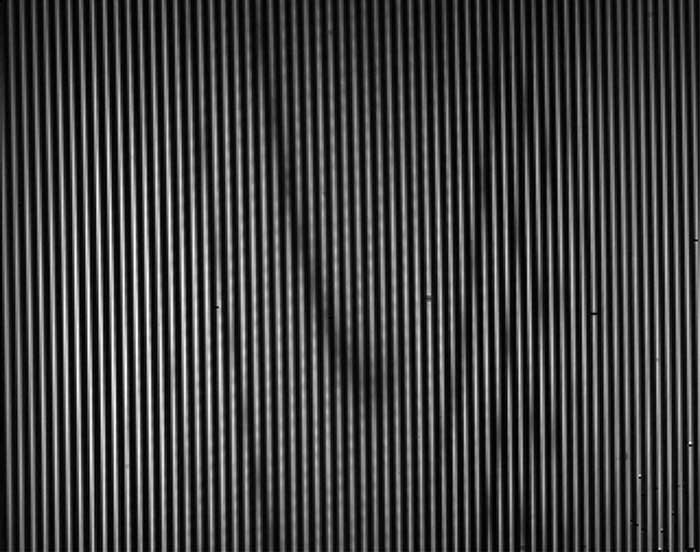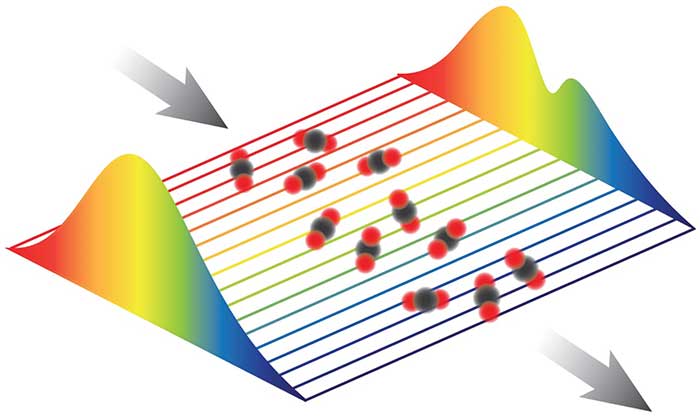A noninvasive laser that can “smell” could make diagnosing diseases easier. University of Adelaide researchers in Australia have created a laser that can differentiate between gases within a sample. The new device could be used for environmental monitoring and detecting industrial contamination, and also to diagnose disease by “smelling” a person’s breath.
The device exploits a Nobel Prize-winning technology developed by U.S. and German scientists: an optical-frequency comb. The FC1500 frequency comb from Menlo Systems GmbH generates millions of different light frequencies and colors simultaneously. Combined with a virtually imaged phase array from Light Machinery, a XEVA InGaAs camera from Xenics, optical shutters and controllers from Stanford Research Systems, and photonics components from Thorlabs and AFW Technologies, the Adelaide device can measure the amount of carbon dioxide in a gas sample in under one second with high accuracy and precision.

An image output by the experiment, showing the characteristic optical fingerprint of carbon dioxide. Courtesy of the University of Adelaide/Sarah Scholten.
Adelaide researcher Sarah Scholten likens the laser’s ability to differentiate between different gas compounds in a sample to the sensitive nose of a bloodhound. She told Photonics Media that rather than actually smell, the device uses patterns of light absorption to measure the composition of the sample.
“This type of technology would find the best use — after more development — in the doctor’s office as a mass-screening tool for early detection of some quite nasty diseases before outward symptoms become apparent, and hopefully improve patient outcomes,” Scholten said. “It’s also nice in that it would be noninvasive. Breathing into something is more preferable than a blood test, for example."
With their work currently in the heavily experimental stages, researchers are preparing for a series of verification steps along the way before getting to clinical trials. They have already demonstrated accurate, rapid, and precise detection of absolute amounts of carbon dioxide — an environmentally and biologically important molecule — in real time.

The frequency comb (rainbow) being sent through the flowing stream of molecules in the sample, with the characteristic optical fingerprint missing from the comb light that has passed through. Courtesy of the University of Adelaide/Sarah Scholten.
“The ability to rapidly measure gas composition to such high accuracy is cutting-edge,” Scholten said. “I think with more development, anywhere you need noninvasive detection of a gas, it would find a use.”
Environmental monitoring, pollution monitoring, and industrial monitoring are all possible applications alongside medical breath analysis.
The research was led by professor Andre Luiten, director of Adelaide’s Institute for Photonics and Advanced Sensing, and funded by the Australian Research Council, Medical & Scientific Services Pty. Ltd., the South Australian Premier’s Research and Industry Fund, and a South Australian Government Catalyst Research Grant.
The Adelaide group plans to use its laser comb to unravel the chemical composition of exhaled breath, hoping to find telltale chemical signs that point to underlying disease.